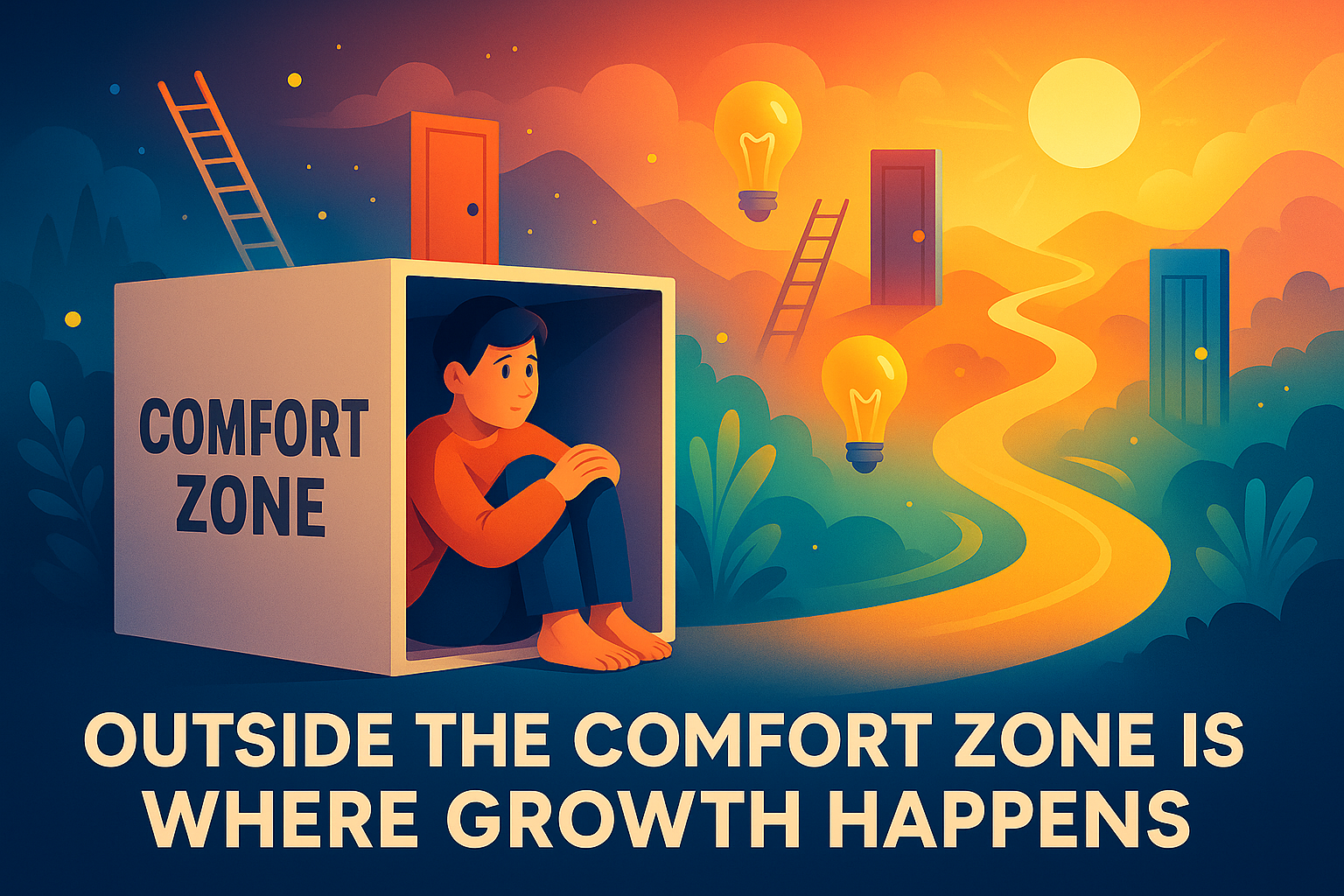
😌FAQ: Breaking the Comfort Habit
👀 Introduction: The Hidden Cost of Staying Comfortable
You know the feeling—that low-key relief when you don’t speak up in a meeting, try a new class, or ask for what you want. It feels safe, right? But let’s be real:
Comfort zones don’t protect us—they quietly cost us.
Not just in missed opportunities, but in lost confidence, hidden regrets, and dreams we never even try to chase. Your comfort zone isn’t a bubble. It’s a box with invisible walls—and there’s rent to pay.
💸 The Real “Expense” of Playing It Safe
Staying in your comfort zone might seem free, but there’s a price:
- Lost time: Opportunities don’t wait around.
- Stuck growth: Skills atrophy if you never stretch them.
- Diminished confidence: The less you try, the less you believe you can.
- Low-key regret: The “what ifs” get louder with time.
Let’s call it what it is: Expensive.
🔄 Why We Stay—And Why That’s Totally Normal
Don’t beat yourself up.
Comfort zones feel cozy for a reason: your brain is wired to avoid risk. But modern life rewards those who push, experiment, and get a little uncomfortable.
Quick fact:
The brain actually releases dopamine (the “reward” chemical) when you try something new—even if you’re nervous! That’s why discomfort can eventually turn into exhilaration.
🌟 3 Real-World Stories: What Escaping the Comfort Zone Actually Looks Like
1. Maria’s First-Ever Side Hustle
Maria always dreamed of making jewelry but felt “too old” and worried about failing. One day, she just posted a pair on Instagram.
Result? She sold three pairs in the first week. Her confidence soared—not just in business, but in herself.
2. Jason and the “No-Comfort Coffee Challenge”
Jason, a quiet engineer, forced himself to strike up conversations with strangers at his local coffee shop for one month.
He made new friends, improved his public speaking, and now runs workshops—something he never thought possible.
3. Nina’s Leap Into Learning
Nina stuck to her job for years, scared to try new skills. She finally took a beginner’s coding course.
Within months, she landed a remote tech job with better pay and flexibility—just by daring to be a newbie again.
🔥 Why Stepping Out Is Actually the Safe Bet
- The world changes—if you don’t, you risk being left behind.
- Most “failures” outside the comfort zone are temporary—but the growth is permanent.
- Even a tiny step counts. You don’t need to leap—just lean.
📝 How to Make “Uncomfortable” Less Scary (5 Quick Wins)
- Start embarrassingly small: Order something new at your favorite café.
- Say “yes” once this week: To an invite, a project, or a new idea.
- Ask for feedback (even if it stings).
- Set a “growth” goal, not just a performance goal.
- Find an “accountability buddy” to keep you honest.
🎯 Visual: Comfort Zone Cost Chart
| Comfort Zone Move | Say No to Change | Growth Reward |
| Don’t speak up | Missed recognition | Career leap 🚀 |
| Avoid learning | Stagnant skills | New job offers 💼 |
| Skip social events | Fewer connections | Unexpected friendships 🤝 |
| Say no to change | Same results, less joy | Confidence boost ✨ |
🙌 Conclusion
Your comfort zone isn’t just holding you back—it’s charging you a hidden fee, every single day.
The good news? You can start breaking out, one tiny, awkward, totally worth-it step at a time.
What’s one small thing you’ll try this week that scares you (even just a little)? Drop it in the comments or challenge a friend!
“You’re ready for new habits and bold leaps—the world is waiting for you outside your comfort zone. 😉”